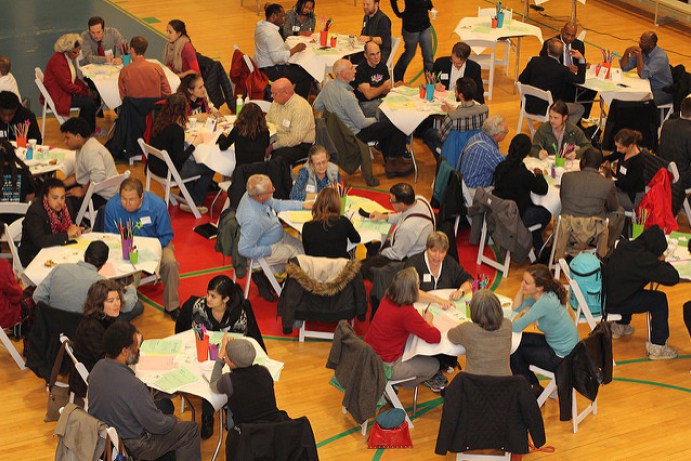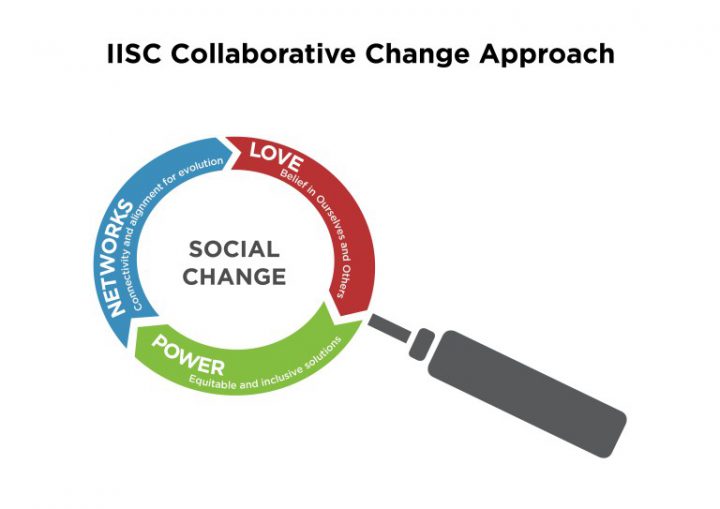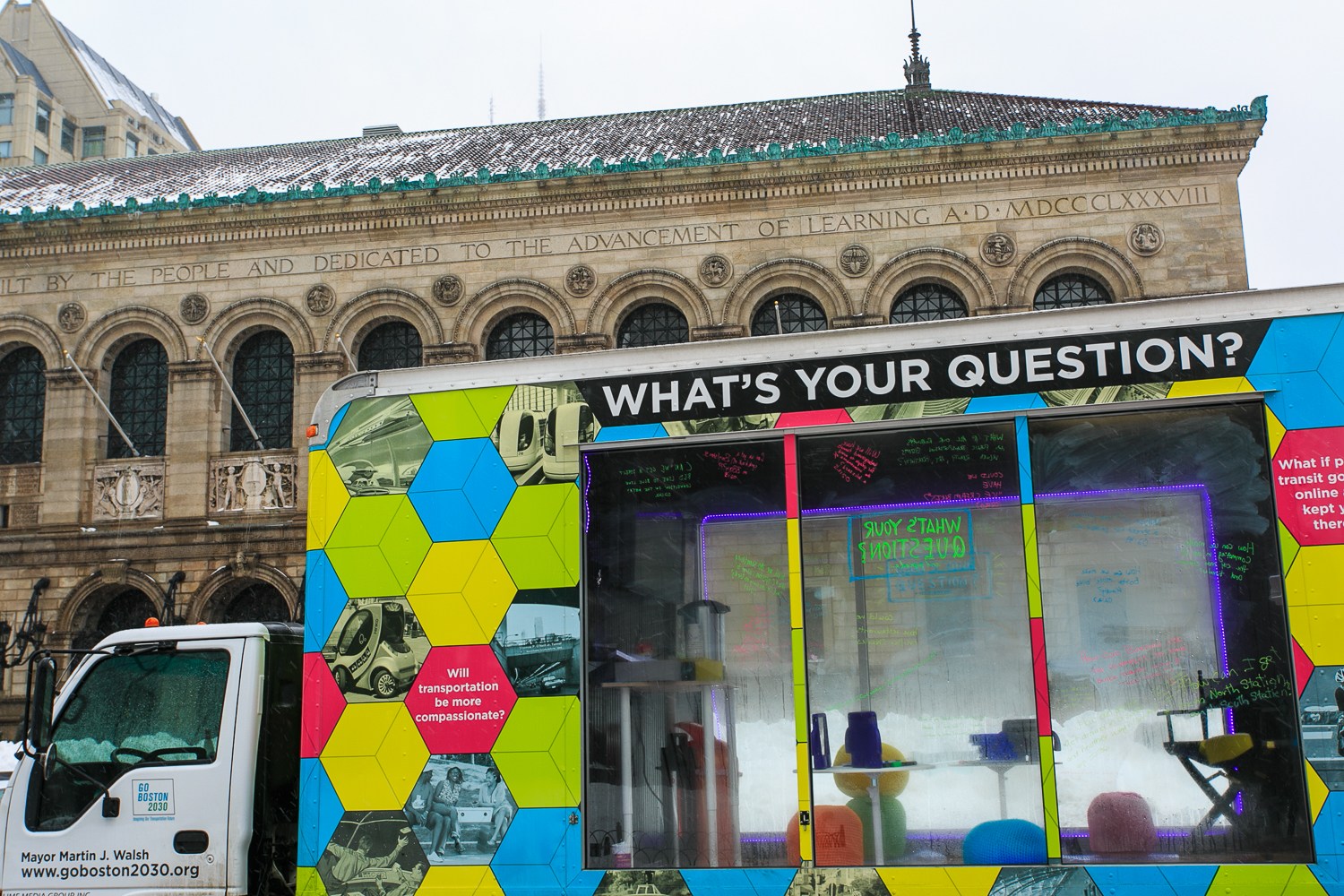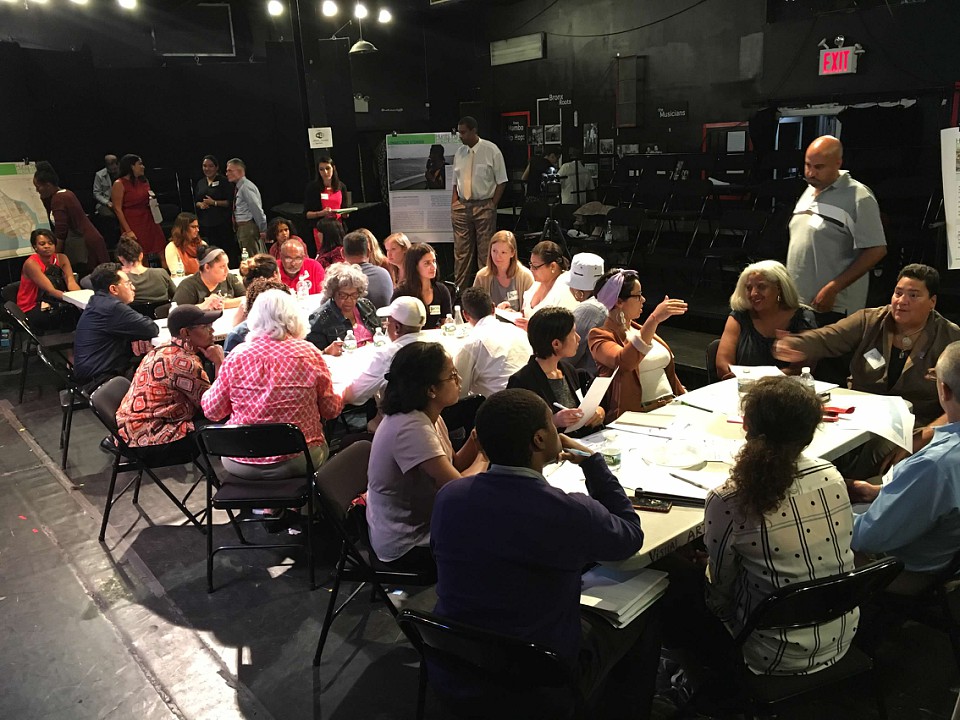Public Engagement for Resilience, Part 2: Focus on Process
February 2, 2017 1 Comment
This is a follow-up post to one from a few months ago focused on public engagement structures as important contributing factors to community resilience. The previous post ended by noting another important part of the engagement for resilience story is process.
For work we at IISC have done in a variety of communities, we have strived to ensure that public engagement processes are accessible, equitable, contribute to self-empowerment and community resilience, and get to other meaningful and desired outcomes. To this end, we have brought a number of process design considerations (see list below), all viewed through our collaborative change lens, which lifts up power, networks and love as central features to building real capacity for change.

Specifically:
- We seek to create just and respectful relationships, organizations, and networks. By focusing on power, equity, and inclusion we join with our partners and communities in challenging social structures and forms of exclusion and oppression.
- We see networks and not organizations as the unit of change. In order to build diverse, distributed, and resilient networks capable of addressing complex challenges, we attend to creating greater connectivity (trust building, information sharing, learning), alignment (shared identity and value), and impetus for collective action (advocacy, education, leveraging resources, launching new initiatives).
- We also work to leverage love as a force for social transformation by helping people see, articulate, and believe in their own highest selves. This can facilitate stretching across divides and differences of opinions and seeing others’ fundamental humanity and legitimacy.

Question Campaign truck for public engagement in Go Boston 2030 (for more information, click here).
With this in mind, here are some of the specific process design considerations we bring to the work of public engagement, in no particular order:
- Set meetings at times amenable to a variety of stakeholders, and especially to those who are usually left out/marginalized (for example, avoid having public meetings during work hours, leaving out those who cannot take time off to attend).
- Develop clear desired outcomes and agendas from the perspective of the diverse public, so that that people can see themselves in the conversation and understand what is in it for them.
- Send agendas and relevant materials to participants in advance of meetings so they can prepare, know how to participate and also why they should bother attending in the first place.
- Provide food and childcare to create greater accessibility and a welcoming environment.
- Present information in language that is accessible to diverse participants from nonprofits, public organizations and private businesses, as well as residents with no formal organizational affiliation. Consider literacy levels and use of translation services.
- Allow adequate time for interaction and meaning-making, so that all present can voice their questions and opinions and achieve greater and more equitable understanding.
- Provide different methods of engagement to cater to different cognitive and processing styles, introverts and extroverts (individual thinking and writing, paired and small group work, full group conversation, World Café, dot voting exercises, “wall wikis,” personal storytelling …)
- Utilize meetings as an opportunity to build stronger relationships between stakeholders, allowing time for check-ins and updates, and intentionally grouping people for conversations.
- Continuously ask and answer the questions: “Who must we reach?” “Who aren’t we reaching?” “How do we design for and include those who are otherwise marginalized?”
- While designing and facilitating, be mindful of and account for power dynamics and differentials among those in attendance as well as when thinking about broader stakeholder engagement planning.
- Seek out feedback by conducting end-of-meeting evaluations (“plus/deltas”) to discover what worked about each meeting or other form of engagement and what could be improved.
- Compile notes from each meeting, highlighting key decision points and next steps at the front and send to participants within a week after each meeting.
- Document meetings and other engagements with photography/video and make available to participants (ensuring appropriate sign off/release forms).
- Create a virtual platform and repository for meeting notes, photos/videos, resources, and means for the diverse public to express additional ideas and questions between meetings.
- For public events, publicize through a diversity of outlets – local newspaper, ethnic media, other local media, nonprofit websites, radio, social media.
“Community engagement is another way of saying ‘access,’ of considering and creating authentic pathways to access.”
-Michael Premo, documentary storyteller and IISC affiliate

Public Meeting for Hunts Point Resiliency (for more information, go to this website)
1 Comment